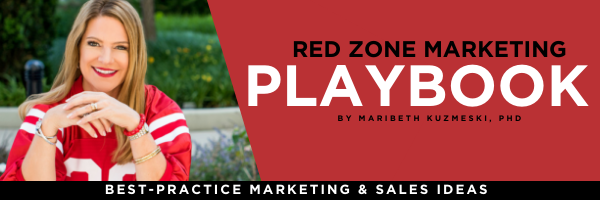Twist, fold, pivot, overcome. No, we aren’t hosting a yoga class, we’re talking about the changes we have all been forced to make to our event offerings in the wake of the pandemic.
From the way events are held to the way they are attended, the entire event industry looks radically different than it did even just eighteen months ago.
In order to connect with clients and prospects alike, financial advisors offering courses or in-person events were forced to turn to an all-virtual model. But, in the ensuing aftermath of complete and total lockdown, at a time where in-person events are beginning to pop up again, a hybrid model has emerged that redefines the event landscape.
What Is a Hybrid Event?
A hybrid event is one that strategically incorporates in-person and virtual elements to be all-inclusive and allow all interested parties to attend in whatever capacity suits them. There are a number of benefits here, of course:
- Individuals can attend portions of the event in person, and catch up on others they miss online.
- Attendees can choose only to participate in the virtual events if they prefer to remain socially distanced or cannot make the commute to the venue.
- Hosts can offer recordings of the event “on demand” to either the general public or only to those who paid to attend the event (in whatever capacity that was).
- If restrictions arise that eliminate the in-person event from happening, the virtual events can still take place.
Hybrid events offer the perfect solution for programs that can effectively be held both onsite and virtually, such as educational events and conferences.
How to Host a Hybrid Event
1. Bucket Your Hybrid Event Categories
Divide your event into the following categories: (1) the main event, (2) live pop-up locations, (3) virtual events, (4) digital.
Now, the main event does NOT have to be in-person. You can absolutely choose to host the main event virtually. Event caps (usually regulated by state or region), for example, may limit the audience you are allowed to have at your main event and make the virtual option more appealing. One idea, though, is to market a VIP experience for your allowed number of attendees.
Live pop-up locations can be set up around the city or town where you are hosting your main in-person events, or they can be held virtually all over the country. The idea is to have a group of attendees meet in these locations for specific events and stream them live (or via a recording). This is a great way to get the local community involved and expand the reach of your event promotion.
Make a list of the virtual events you want to host. This is where the most educational content of your event should be presented. You will reuse the virtual recordings later in your on-demand strategy, as well.
Will you make use of live digital streaming before, during, or after your event? Decide how you will incorporate social media platforms like LinkedIn, Twitter, Instagram, and Facebook into your overall production and promotion strategy.
Pro Tip: Take a look at your audience. Which elements in the above list will best engage your specific audience? If you know many of your prospects can be found on LinkedIn, for example, you’ll want to capitalize on this platform.
2. Secure the In-Person Venues
Securing the venues for your in-person and pop-up locations will be paramount to deciding when you can host the event, so you’ll want to do this first. Make sure all the providers are booked before making and promoting any portion of your hybrid event. You’ll also want to make sure you have the appropriate insurance coverage to protect yourself and your company for the in-person portions.
3. Choose the Best Tech Stack for Your Hybrid Event
Nothing can squash a hybrid event like a lagging technology stack. You’ll want your virtual audience to focus on the content being presented, not on glitches and disconnections. Make sure you have all the right technology to make your hybrid event run as smoothly and as professionally as possible. Which virtual streaming provider will you use? I like Vimeo’s Livestream, but there are many great options in this space now.
4. Marketing Your Hybrid Event for Your Specific Audience
Your event will only be as successful as the number of attendees; however, your goal isn’t just to have a good turnout. The goal is to have a good turnout of individuals who fit your ideal client profile. If your event is for pre-retirees, for example, you won’t want your marketing aimed at Gen Z.
The way you’ll accomplish this is by using highly targeted messaging in the promotion of your event. All of the content you put out to garner interest and encourage sign-ups should be clearly delineated for the specific audience you are trying to reach. Your split between in-person, pop-up, virtual, and digital events should be made with this target audience in mind, as well.
5. Keep Attendees Engaged Before, During, and After the Hybrid Event
Before: Reinforce the value-adds this event offers your target audience. What will attendees receive or walk away with after attending?
During: Leverage social media to keep attendees in different regions connected. You may even choose to host virtual networking events, like virtual happy hours. Consider creating event-specific hashtags putting out marketing materials that encourage attendees to make posts about their experience with these unique digital monikers. Live Q&As, as well as polling, are also great ways to keep the audience involved.
After: Add virtual recordings to an on-demand content library where either attendees or the general public can access this invaluable content. If you don’t want to “give it all away,” you can cut the longer videos up into chunks to repurpose and reuse.
Embracing a Bigger Community
The key theme to all of this is successfully building a bigger, more engaged community around your hybrid event. The digital world has made so many distant connections possible, you simply have to embrace the technology and resources that allow you to facilitate them. By connecting your audience in new ways—both with your brand and with one another—you can propel yourself forward as an industry leader.



